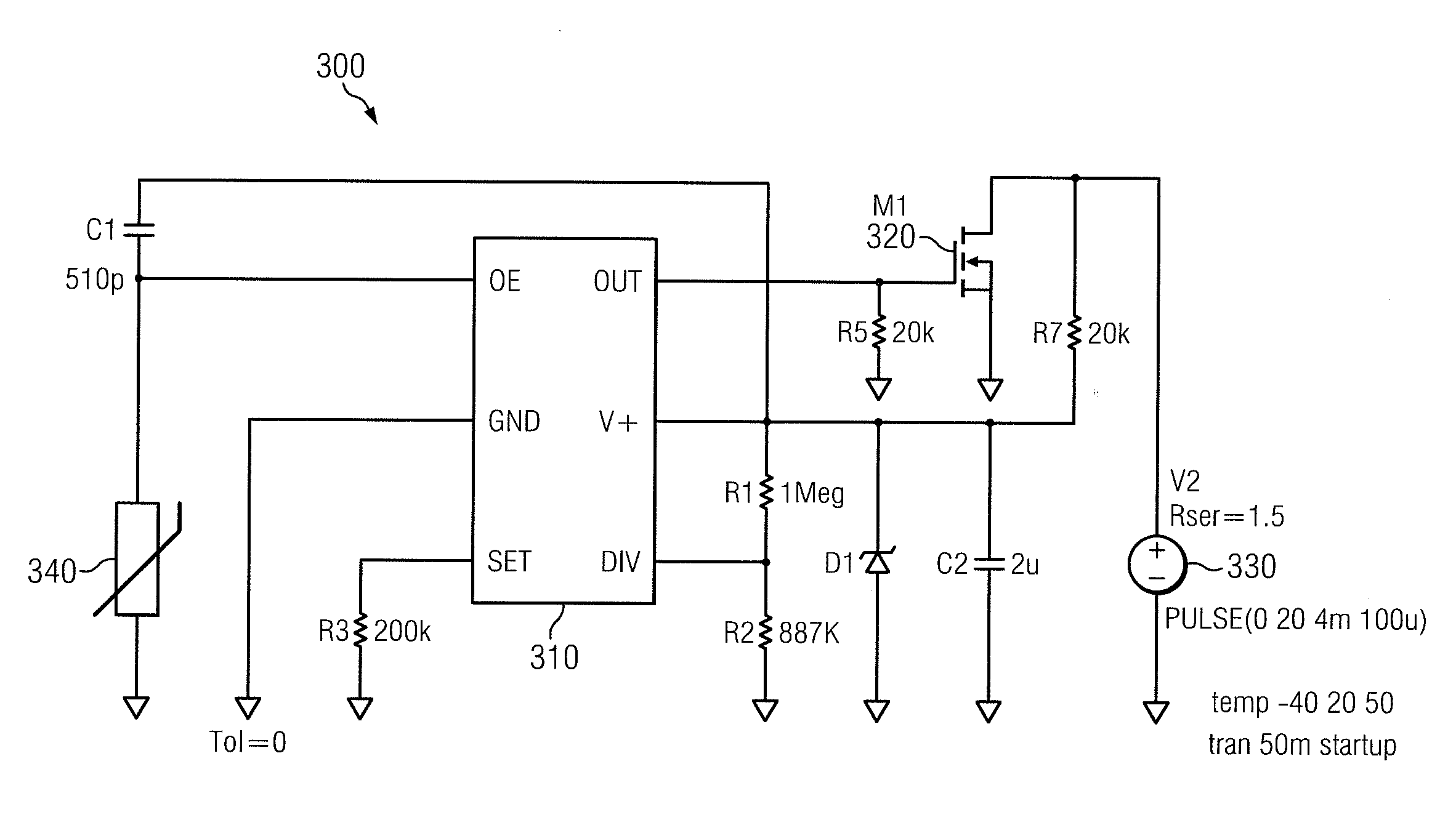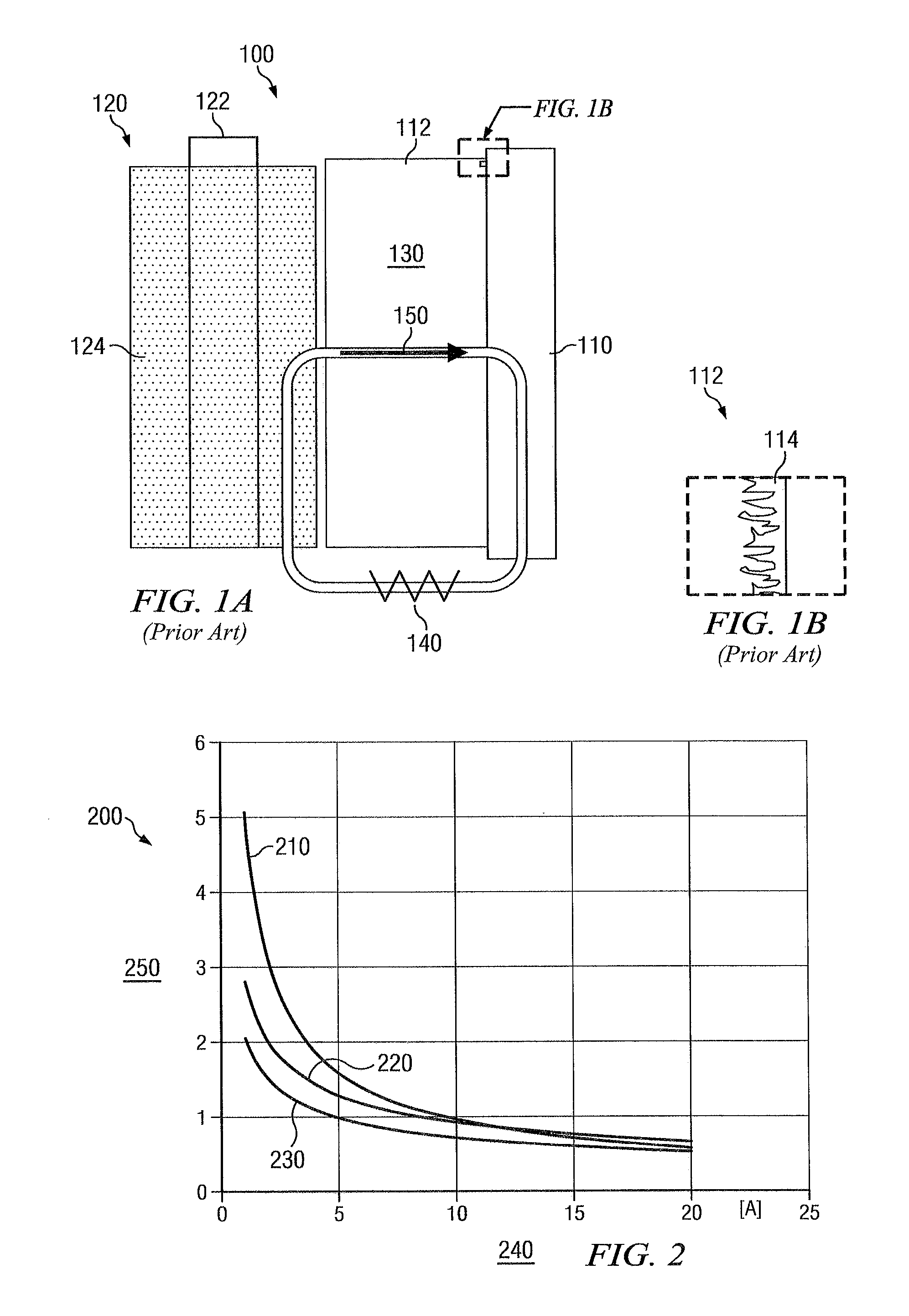System and method for applying a plurality of energy pulses to a cathode for rapid depolarization of batteries
- Summary
- Abstract
- Description
- Claims
- Application Information
AI Technical Summary
Benefits of technology
Problems solved by technology
Method used
Image
Examples
Embodiment Construction
[0016]It should be understood at the outset that, although exemplary embodiments are illustrated below, the present invention may be implemented using any number of techniques, whether currently known or not. The present invention should in no way be limited to the example implementations, drawings, and techniques illustrated below, and no such limitation is intended. Additionally, the drawings are not necessarily drawn to scale.
[0017]FIGS. 1A and 1B illustrate a conventional battery 100 and negative effects that may occur thereto over time. For purposes of illustration, the battery 100 will be described with reference to a non-rechargeable LiSO2 (lithium sulfur dioxide) battery. Although a particular type of battery will be disclosed herein, it should be understood that the teachings of the disclosure may also be applied to other batteries or electrochemical processes that are bilateral in nature and tend to corrode. Further, although the pulse techniques disclosed herein are parti...
PUM
 Login to View More
Login to View More Abstract
Description
Claims
Application Information
 Login to View More
Login to View More - R&D
- Intellectual Property
- Life Sciences
- Materials
- Tech Scout
- Unparalleled Data Quality
- Higher Quality Content
- 60% Fewer Hallucinations
Browse by: Latest US Patents, China's latest patents, Technical Efficacy Thesaurus, Application Domain, Technology Topic, Popular Technical Reports.
© 2025 PatSnap. All rights reserved.Legal|Privacy policy|Modern Slavery Act Transparency Statement|Sitemap|About US| Contact US: help@patsnap.com



